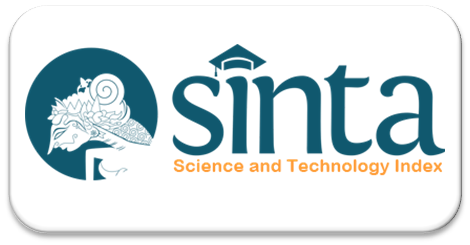Analysis of The Dominant Factors Affecting Premenstrual Syndrome (PMS) in Female Students of The Pesantren Darussalam Purwokerto
DOI:
https://doi.org/10.35960/vm.v17i3.1592Keywords:
Premenstrual Syndrome, stress level, sleep quality, physical activityAbstract
The transition from childhood to adulthood known as puberty is a transformative phase marked by the growth of reproductive organs, which impacts physical and mental evolution, and changes in social roles. One of the major physiological changes in the reproductive organs during this period is the onset of menstruation. At the time of menstruation until menstruation begins, women generally experience several symptoms. This is called premenstrual syndrome, which occurs cyclically 7-10 days before menstruation and disappears 4 days after menstruation. The main cause behind PMS is hormonal instability, especially the disharmony between estrogen and progesterone, and variations in serotonin levels. The purpose of this study was to determine the dominant factors that influence Premenstrual syndrome (PMS) in female students at the Darussalam Islamic Boarding School in Purwokerto. This type of research is quantitative research using a descriptive research method with a cross-sectional research design, because this research was conducted by means of an approach, observation or data collection at one time. The research sample involved a group of 76 female adolescents aged 15 to 18 years. Various questionnaires were used for data collection, such as SPAF, PSS, GPA, and PSQI. Logistic regression test was used for data analysis. The results showed a significant p value of 0.001 < 0.05, indicating a relationship between. The results showed that students with poor sleep quality had a 9 times higher risk of developing PMS than students with good sleep quality, even after considering factors such as stress levels and physical activity (p value = 0.001; OR = 9.110; 95% CI = 2.601-31.913).
References
Dózsa-Juhász, O., Makai, A., Prémusz, V., Ács, P., & Hock, M. (2023). Investigation of premenstrual syndrome in connection with physical activity, perceived stress level, and mental status—a cross-sectional study. Frontiers in Public Health, 11(August). https://doi.org/10.3389/fpubh.2023.1223787
Fadillah, R. T., Usman, A. M., & Widowati, R. (2022). Hubungan Tingkat Stres dengan Siklus Menstruasi pada Siswi Putri Kelas X di SMA 12 Kota Depok. MAHESA : Malahayati Health Student Journal, 2(2), 258–269. https://doi.org/10.33024/mahesa.v2i2.5907
Hanin, F. S., Jannah, S. R., & Nizami, N. H. (2021). Hubungan Tingkat Stress Dengan Kualitas Tidur Pada Kejadian Premenstruasi Sindrom. Jiji, 58(2), 58–66.
Haniyah, S., & Dewi, P. (2024). Hubungan Hubungan Indeks Masa Tubuh Dengan Premenstrual Syndrome (PMS). TRIAGE Jurnal Ilmu Keperawatan, 10(2), 87–91. https://doi.org/10.61902/triage.v10i2.920
Husna, A., Rahmi, N., Safitri, F., & Andika, F. (2022). Analisis Faktor Yang Mempengaruhi Kejadian Premestrual Syndrome Pada Remaja Putri di Gampong Kampong Pukat Kecamatan Pidie Kabupaten Pidie. Journal of Healtcare Technology and Medicine, 8(1), 35–47.
Kamilah, Z. D., Utomo, B., & Winardi, B. (2021). Pengaruh Aktivitas Fisik Dan Usia Menarche Dengan Kejadian Premenstrual Syndrome Pada Remaja Putri. Indonesian Midwifery and Health Sciences Journal, 3(2), 160–166. https://doi.org/10.20473/imhsj.v3i2.2019.160-166
Lutfiyati, A., Hutasoit, M., & Nisrmalasari, N. (2021). Hubungan Kualitas Tidur dengan Kejadian Premenstrual Syndrome (PMS) di SMAN 1 Godean, Sleman The Association Between Sleep Quality With Premenstrual Syndrome In SMAN 1 Godean , Sleman District. 12(01), 8–13.
Nisa, N. K., Haniyah, S., & Dewi, F. K. (2023). The Relationship between Stress Levels and Premenstrual Syndrome in Nursing Students at Harapan Bangsa University. Viva Medika: Jurnal Kesehatan, Kebidanan dan Keperawatan, 16(4), 446-453.
Pretynda Putu Ronanza, Nuryanto I Kadek, & Darmayanti Putu Ayu Ratna. (2022). Hubungan Tingkat Stres dengan Siklus Menstruasi pada Remaja Putri dalam Pembelajaran Daring di SMA Negeri 1 Kuta Utara. Jurnal Formil (Forum Ilmiah) KesMas Respati, 7(3), 226–236.
Puji, L. K. R., Ismaya, N. A., Ratnaningtyas, T. O., Hasanah, N., & Fitriah, N. (2021). Edu Dharma Journal : Jurnal Penelitian dan Pengabdian Masyarakat Hubungan Antara Aktivitas Fisik , Stres dan Pola Tidur Dengan Premenstrual Syndrome ( PMS ) Pada Mahasiswi Prodi D3 Farmasi STIKES Kharisma Persada. Edu Dharma Journal: Jurnal Penelitian Dan Pengabdian Masyarakat, 5(1), 1–8.
Putri, S. (2020). Hubungan Tingkat Stres Dengan Premenstruasi Sindrom Pada Remaja Putri. Hubungan Tingkat Stres Dengan Premenstruasi Sindrom Pada Remaja Putri, 59.
Downloads
Published
How to Cite
Issue
Section
License
Copyright (c) 2025 Awaliyatun Istiqomah, Siti Haniyah, Tin Utami

This work is licensed under a Creative Commons Attribution-ShareAlike 4.0 International License.
Submitted paper will be firstly reviewed by the editors to determine whether the paper meet the edition theme and submission guidelines. Papers which meet the theme and the guidelines will be assigned to selected reviewers for peer-reviews. Viva Medika: Jurnal Kesehatan, Kebidanan dan Keperawatan is a double blind peer-reviewed journal which involves reviewers based on their experties relevant to the topic of the paper. Final decision of paper acceptance is solely decided by the editors according to reviewers' comment.
Plagiarism and self-plagiarism are prohibited. Viva Medika: Jurnal Kesehatan, Kebidanan dan Keperawatan uses PlagiarismCheckerX and iThenticate to scan papers for detecting plagiarism. Thus, Appropriate citation and quotation should be used

.png)








